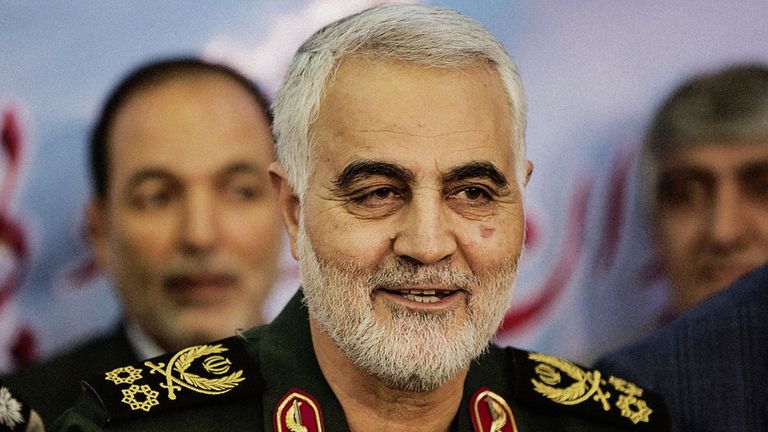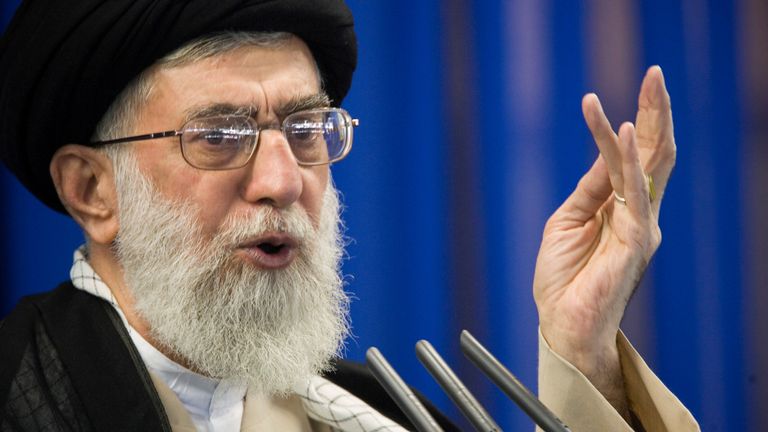Thousands of people aligned to the Iraqi Shia militia groups who General Soleimani honed and nurtured over many years have gathered, alongside senior Iraqi politicians, to mourn his death and those killed with him in the overnight strike.
On Sunday, in the Lebanese capital Beirut, another memorial event will draw many more thousands; supporters of the Hezbollah militia group.
Gen Soleimani can be credited with turning Hezbollah into the power-brokering military and political force that it is today.
And on Monday, the official funeral of the general is expected to take place in the Iranian capital Tehran.
The three events in three key Middle Eastern countries demonstrate the influence and importance of a shadow warrior who has moulded Iran’s Middle Eastern policy for decades.
It is impossible to overstate the power he wielded across the region. The Quds Force of Iran’s Revolutionary Guard, led by him, trained, financed and equipped proxies across the region from Lebanon to Syria and from Iraq to Yemen.
His influence has shaped key Middle Eastern moments in Syria, in Lebanon, in Iraq.
He has been a central figure in ensuring that Syria’s President Assad has remained in power. He was more than just a military commander. He visited Moscow shortly before President Putin committed troops to help President Assad in Syria.
In Iran’s complex power structure, he held arguably more strategic influence than the country’s top political figures. For many years he has had a direct line to the Supreme Leader Ayatollah Ali Khamenei.
He shuttled frequently between Tehran, Beirut and Baghdad bolstering Iran’s axis of influence in the region through its proxies.
In just the last few months he is rumoured to have sat in on cabinet meetings in Iraq as street protests threatened the Iranian-backed government.
In Lebanon he has helped guide Hezbollah’s policy as similar protests threaten the government there.
The removal of this legendary soldier, a household name in Iran, but also expert in Iranian-style statecraft, will have implications for many years.






